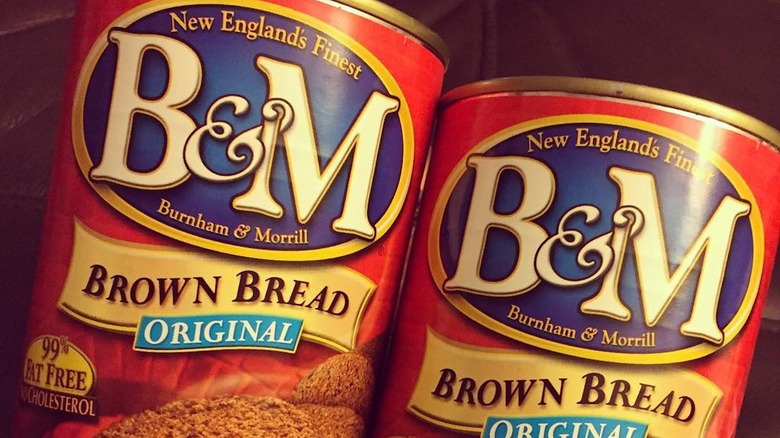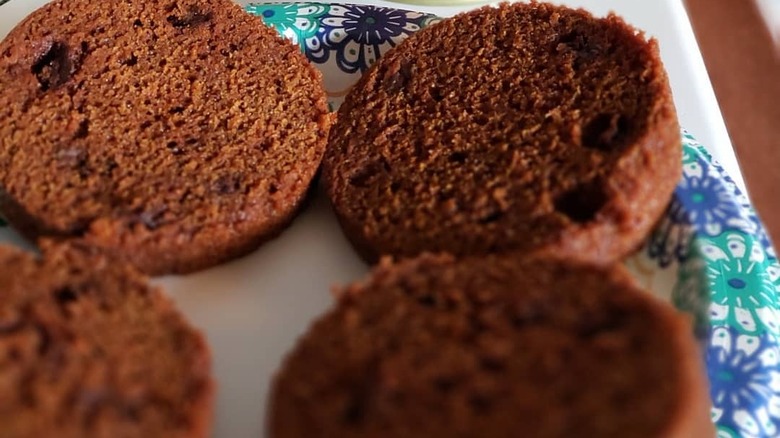The Surprisingly Long History Of Canned Bread
We may receive a commission on purchases made from links.
For those born and raised in New England, a slice of brown bread is a childhood staple. Thick slices of B&M canned bread were often served with hot dogs and baked beans for a traditional Saturday night dinner. This regional culinary oddity gets its distinct, somewhat sweet taste and dense texture from a mix of cornmeal, rye and wheat flour, and molasses (via Atlas Obscura).
Food historians Keith Stavely and Kathleen Fitzgerald write on their website that with New England's soil and climate inhospitable to growing wheat, it was tough to get in colonial times. Early settlers grew nearly double the maize — which was an Indigenous crop — as they did wheat. They added rye to their yields when they realized it grew better than wheat, leading to a uniquely New England bread made from a mix of rye and corn.
According to the Chicago Tribune, steaming the bread rather than baking also harkens back to colonial times, when early settlers cooked over an open fire and didn't have access to ovens for baking, making the bread a variation on bread pudding.
Bake Some Bread credits the triangle trade with the addition of molasses, giving the bread its deep brown color and distinctive flavor. However, Stavely and Fitzgerald, who trace the first written recipe for steamed brown bread to 1862 with the addition of molasses to the rye and corn, point out that frugal New Englanders would have eschewed expensive white sugar for the more economical sweetener.
When brown bread ended up in a can
B&M, the maker of canned bread, was founded in 1867, and canned just about anything, from meats to clams to carrots, explains New England Today. In the 1920s, they introduced their famous brick-oven baked beans, which took off in a post-war surge in the 1950s (via B&M Beans). Speaking to Today.com, a spokesperson for the company confirmed that they began canning bread, which is still steam cooked, in 1928.
MassLive insists that canned bread isn't actually bread; instead, they call it cake — one that's not very tasty to contemporary palates. However, the writer concedes that the raisin version, which elevates the bread's sweetness, lightly toasted with a pat of butter, a schmear of cream cheese, or a spoonful of jam, makes an acceptable snack.
According to Today.com, the pandemic eating's reliance on canned food precipitated a resurgence in the canned bread's popularity. Even pre-pandemic, however, B&M produced over a million cans of the stuff annually. However, Maine's Press Herald reports that B&M's move out of Portland to the Midwest marks the end of an era. Hopefully, the canned bread will remain on the production line.
While it is fairly easy to pick up B&M's canned loaf in most grocery stores in New England, those from other parts of the country can satisfy their curiosity — or, in the case of ex-pats, their nostalgia — by ordering a can from Amazon.

